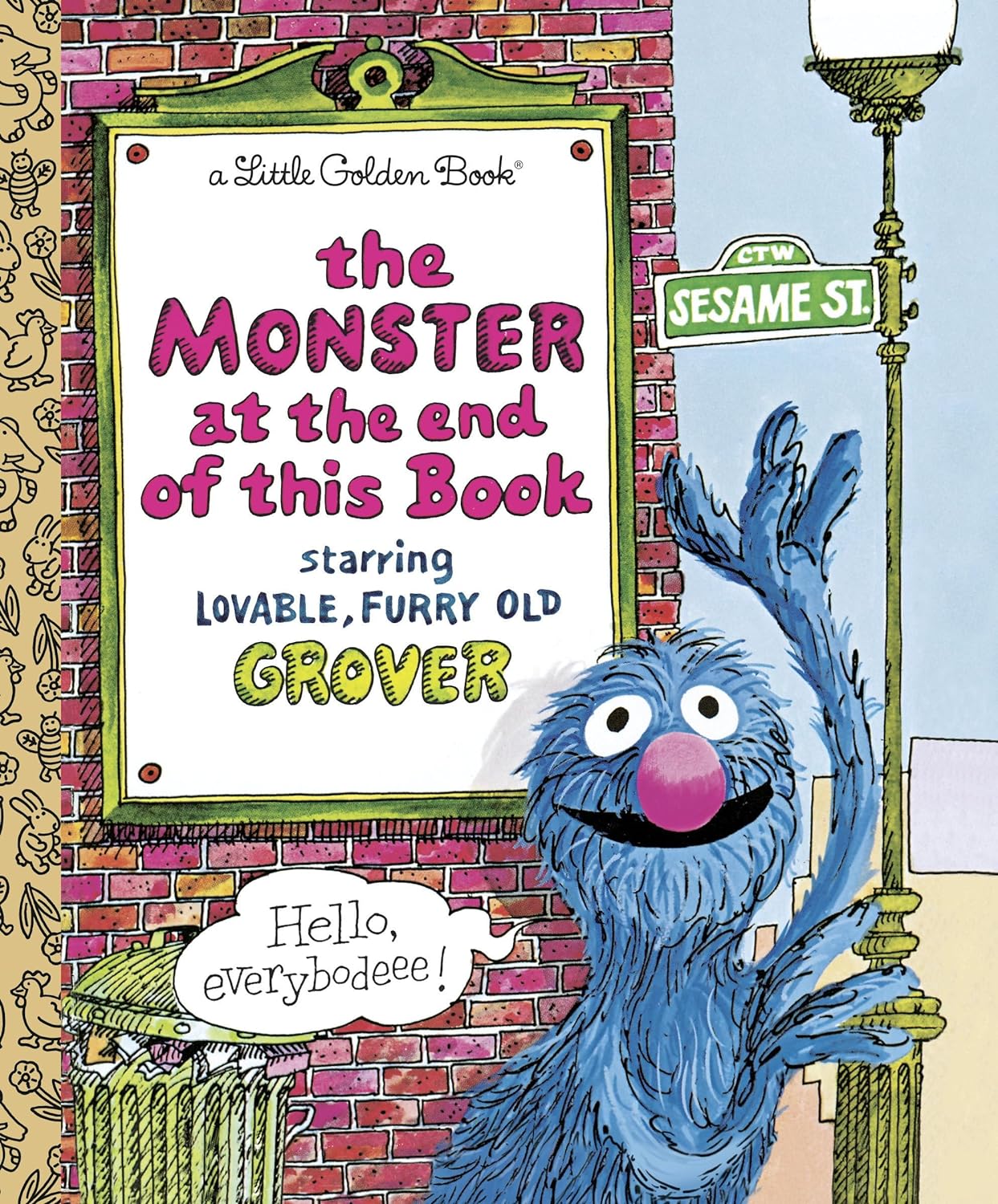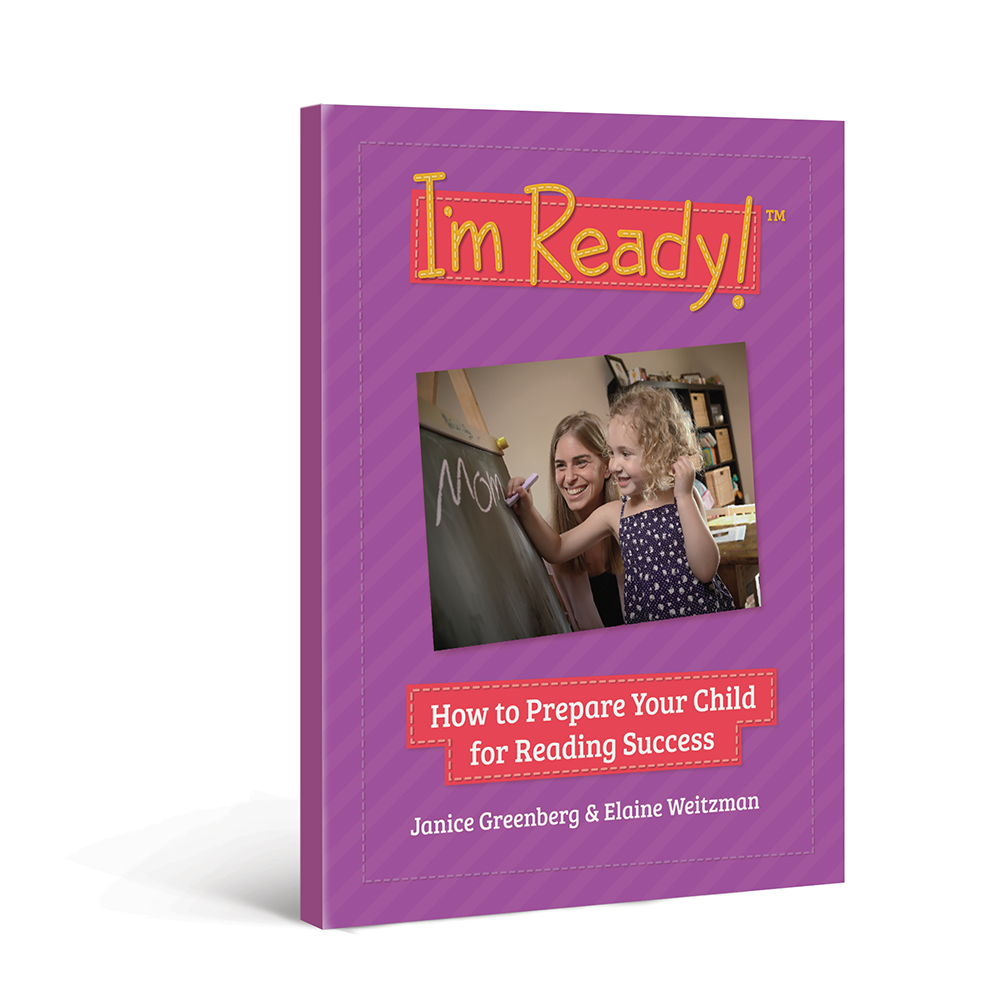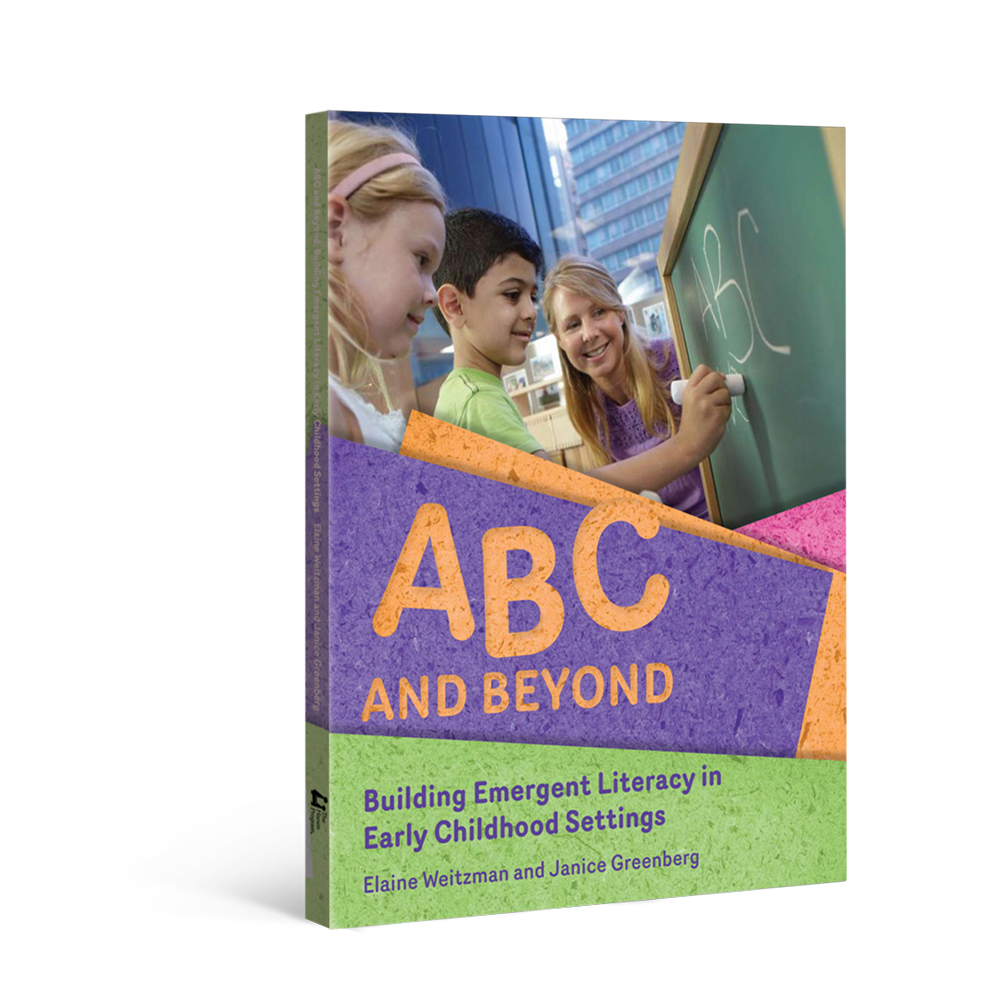This month's Book Nook topic is...
Building Print Knowledge with The Monster at the End of This Book

Print knowledge is a key early literacy skill that helps set your child on the path to reading and writing success.
There are a lot of things your child needs to understand about print (for example, that letters combine to make words and that we read print from left to right), but the very first thing your child must understand about print is that it has meaning. He needs to learn that print is more than strange squiggly lines on a page – it represents spoken language and tells a story.
Here are some simple tips for showing your child that print has meaning.
Let’s get started!
The Book:
The Monster at the End of This Book, written by Jon Stone and illustrated by Michael Smollin
Why I picked it
The print in this book is big and exciting (often even more eye-catching than the illustrations) so the book itself provides a great start for drawing your child’s attention to print.
The story is about a character named Grover who reads the title of the book and is terrified of getting to the end of the book, because the title says “there’s a monster at the end of this book.” Grover spends the entire book pleading with the reader not to turn the pages because he doesn’t want to get to the end and see the monster (at the end of the book, Grover realizes that he is the monster and is a little embarrassed about his actions.)
This book is particularly good for showing your child that print has meaning because the whole book is a conversation between Grover and the reader. Since Grover speaks directly to the reader the whole time, it’s easy to point out that the words on the page represent what Grover is saying to us.
POP to build print knowledge
A key strategy you can use to show your child that print has meaning is POP or Point Out Print. Often children ignore print and just look at the illustrations. But by making an effort to point out the print, you give your child opportunities to think and talk about the print they see, and to recognize that it has meaning.
You might POP by pointing to the words, making comments and asking questions about the print, or you can use your finger to track the words you are reading. When you do this, you’re letting your child know that the story is in the words, not just in the pictures.
The first time you read the book
The first time you read the book, track the words with your finger as you say them to help your child connect what you are saying with the symbols on the page. You might also make a comment like, “Look, I’m reading these words. These words are telling me the story.”
The second time you read the book
Now that your child is more familiar with the story, you can pause a few times during the reading to Point Out Print. You can start with the inside cover, where you can read the title together and then read Grover’s comment in the speech bubble, tracking the words with your finger. You can say, “Look, Grover says, ‘This is a very dull page. What is on the next page?’ Then make a comment like, “See, Grover is reading the words on this page just like we’re reading the words on the page… Grover thinks this page is boring.”
Another place you can show that print has meaning is on the page where Grover is nailing wood to the page to try to stop the reader from turning it. You can point out the words, “Bam”, “Klonk”, “bonk” as you say them, and make a comment like, “these words tell us the sounds Grover is making with his hammer.” This will help your child understand that print can represent what we hear with our ears – language, as well as any other kind of sound.
The third time you read the book
This time, you might POP to show your child that print is meaningful not just in that it tells us what is happening, but also how a character is feeling. The fun print in this book provides lots of opportunities to do this. For example:
- On the page with the big, “Shhhh”, you can say, “Look how big these letters are. Shhhhh. That tells us Grover is saying ‘shhhh’ loudly and he’s very serious about wanting you to be quiet and listen to him.”
- On the page where Grover says, “All right, all right, all right!”, you can say, “Wow, look how big those letters are. It must mean that Grover is very frustrated and really wants you to stop turning pages.”
- Throughout the book, the word “monster” comes up many times and is bigger and in a different color from the rest of what Grover is saying.” After reading a sentence with that word, you can point back to it and say, “Look, Grover mentioned the monster again, and look how big the word ‘monster’ is. I think it means Grover is very nervous about seeing what’s at
- On the last page, after Grover discovers that he is the monster, he says, “Oh I am so embarrassed”, and the font is very small. You can point to it with your finger and say, “Look how small these words are. I think it must mean Grover is saying them very quietly because he feels a bit silly that he made such a fuss and didn’t realize that he was the monster after all.”
More Resources
The strategies in this Book Nook post are drawn from Hanen’s practical, research-based guidebooks for building emergent literacy. Explore the links below to learn more about how these guidebooks can support you.
For Parents I'm Ready! guidebook
I'm Ready! guidebook
For Educators ABC and Beyond guidebook
ABC and Beyond guidebook
